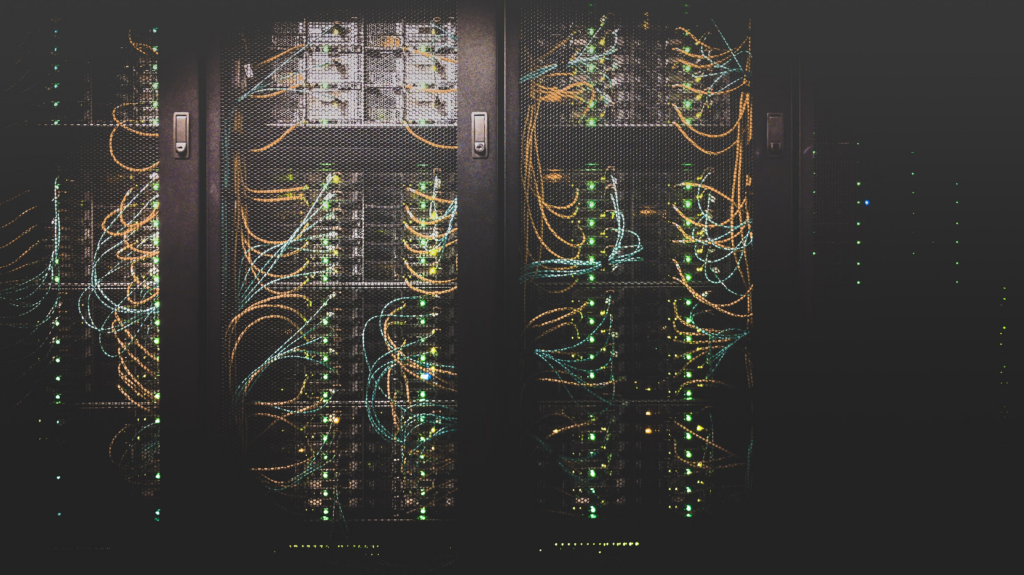In the ever-evolving landscape of Information Technology (IT), safeguarding data is paramount. The cornerstone of data protection lies in establishing a resilient backup infrastructure that ensures business continuity, mitigates the risk of data loss, and facilitates swift recovery in the face of unforeseen events. This comprehensive guide explores various methods of backups, delves into the intricacies of crafting a solid backup infrastructure, and provides insights into best practices for safeguarding critical data assets.

Understanding the Importance of Backups: Before delving into the methodologies and practices, it’s imperative to comprehend the significance of backups in the IT realm. Backups serve as a safety net, protecting organizations from data loss due to various factors such as hardware failures, cyber threats, accidental deletions, or natural disasters. A well-designed backup infrastructure not only safeguards against potential risks but also empowers organizations to recover swiftly, minimizing downtime and ensuring business continuity.
Different Methods of Backups:
- Full Backups:
- In a full backup, the entire dataset is copied in its entirety. While this ensures comprehensive recovery, it requires substantial storage space and can be time-consuming. Full backups serve as a baseline for other backup methods.
- Incremental Backups:
- Incremental backups focus on capturing changes made since the last backup. Only the data that has been modified or added since the last backup is copied. While this conserves storage space, the restoration process involves retrieving the last full backup and each subsequent incremental backup.
- Differential Backups:
- Differential backups also capture changes made since the last full backup, but unlike incremental backups, they do not rely on a chain of backups. Each differential backup captures changes since the last full backup, making the restoration process simpler compared to incrementals.
- Mirror Backups:
- In a mirror backup, an exact duplicate of the entire dataset is created. This method is akin to maintaining a synchronized copy of the data. While it provides quick recovery, it requires substantial storage space and might not offer versioning.
- Snapshot Backups:
- Snapshot backups capture the state of a system or dataset at a specific point in time. These read-only copies provide a frozen image that can be used for recovery. This method is often employed in virtualized environments.
Crafting a Solid Backup Infrastructure:
- Define Data Priorities:
- Understand the criticality of different datasets. Not all data is equal, and a tiered approach to backup frequency and retention can optimize resources.
- Implement a 3-2-1 Backup Strategy:
- Adhere to the industry-standard 3-2-1 backup strategy, which involves having three copies of data, stored on two different media, with one copy stored offsite. This strategy enhances resilience against various failure scenarios.
- Automate and Schedule Backups:
- Leverage automation to ensure regular and consistent backups. Schedule backups during periods of low system activity to minimize the impact on production operations.
- Encryption and Security:
- Prioritize data security by implementing encryption measures for both data in transit and at rest. This safeguards sensitive information from unauthorized access during backup and recovery processes.
- Regular Testing and Validation:
- Regularly test backup and recovery processes to validate their effectiveness. This ensures that data can be restored successfully when needed and identifies potential issues before they become critical.
- Scalability and Growth Considerations:
- Design the backup infrastructure with scalability in mind. As data volumes grow, ensure that the backup solution can accommodate increased storage requirements and maintain performance levels.
- Cloud-Based Backups:
- Embrace cloud-based backup solutions for their scalability, offsite storage capabilities, and accessibility. Cloud backups provide a flexible and cost-effective option, especially for businesses with dynamic data requirements.

Best Practices for Ongoing Maintenance:
- Regular Monitoring and Auditing:
- Implement continuous monitoring of backup processes and conduct periodic audits to ensure that backups are executed as planned. Address any issues promptly to maintain the integrity of the backup infrastructure.
- Documentation and Versioning:
- Maintain comprehensive documentation of the backup infrastructure, including backup schedules, retention policies, and recovery procedures. Versioning can aid in tracking changes and ensuring data consistency.
- Collaboration and Training:
- Foster collaboration between IT teams and end-users to ensure that everyone understands their role in the event of data loss. Conduct regular training sessions to educate stakeholders on backup best practices.
- Regular Updates and Upgrades:
- Keep backup software, hardware, and infrastructure components up to date. Regular updates and upgrades address security vulnerabilities, introduce new features, and ensure compatibility with evolving IT environments.
Ongoing Monitoring and Improvement:
- Alerts and Notifications:
- Implement a robust system of alerts and notifications to promptly address any issues or anomalies in the backup process. Proactive monitoring ensures that potential problems are identified and resolved before they impact data integrity.
- Regular Performance Reviews:
- Conduct regular performance reviews of the backup infrastructure. Evaluate factors such as backup speed, completion times, and resource utilization. Fine-tune configurations based on performance insights to optimize efficiency.
- Capacity Planning:
- Stay ahead of data growth by incorporating capacity planning into the backup strategy. Regularly assess storage requirements, and scale the infrastructure accordingly to accommodate increasing volumes of data without compromising performance.
- Automation for Remediation:
- Leverage automation not only for backup execution but also for remediation. Automate routine tasks, such as cleanup of obsolete backups or adjusting retention policies, to streamline maintenance and ensure the consistency of the backup environment.
Addressing Modern Challenges:
- Ransomware Protection:
- In the era of increasing cyber threats, integrate ransomware protection mechanisms into the backup infrastructure. Implement air-gapped backups, immutable storage solutions, and regularly test data recovery capabilities to counter the menace of ransomware.
- Integration with Disaster Recovery:
- Align the backup strategy with disaster recovery planning. Ensure that backups play a pivotal role in the broader continuity plan, enabling organizations to recover not only from data loss scenarios but also from site-wide outages or catastrophic events.
- Regulatory Compliance:
- Navigate the regulatory landscape by aligning backup practices with industry-specific compliance requirements. Regularly review and update backup policies to ensure adherence to data protection and privacy regulations.
Incorporating Emerging Technologies:
- AI and Machine Learning:
- Explore the integration of Artificial Intelligence (AI) and Machine Learning (ML) algorithms into the backup infrastructure. These technologies can enhance predictive analytics, anomaly detection, and decision-making processes, contributing to a more intelligent and responsive backup system.
- Blockchain for Data Integrity:
- Consider the integration of blockchain technology to enhance data integrity in backups. Blockchain’s decentralized and tamper-evident nature can provide an additional layer of assurance, especially in scenarios where data integrity is critical.
The Future of Backup Infrastructure:
As the IT landscape continues to evolve, the future of backup infrastructure is likely to be shaped by innovations in cloud technologies, edge computing, and the increasing demand for seamless data access. Automation, AI-driven insights, and enhanced security measures will become pivotal components of next-generation backup solutions. The ongoing integration of backup and recovery with broader IT strategies, such as DevOps and cloud-native architectures, will further solidify the role of backup infrastructure as a linchpin for organizational resilience and agility.
In conclusion, building a robust backup infrastructure is an ongoing journey that requires a proactive approach, continuous adaptation to emerging challenges, and a commitment to best practices. By understanding different backup methods, implementing a resilient architecture, and embracing emerging technologies, organizations can fortify their data protection measures, ensuring that they are well-equipped to navigate the complexities of the digital landscape while safeguarding their most valuable asset—their data.

Navigating the Backup Landscape – A Comparative Analysis of Leading Solutions
1. Veeam Backup & Replication:
- Pros:
- Veeam is renowned for its user-friendly interface, making it easy to set up and manage.
- It offers comprehensive backup and recovery options for virtualized environments, supporting platforms like VMware and Microsoft Hyper-V.
- Advanced features like instant VM recovery and item-level recovery provide quick restoration capabilities.
- Veeam has strong integration with cloud services, allowing users to leverage cloud storage for backups.
- Cons:
- While Veeam excels in virtualized environments, it may not be as suitable for organizations with diverse infrastructure types.
2. Veritas NetBackup:
- Pros:
- Veritas NetBackup is a robust enterprise-level solution, known for its scalability and performance.
- It supports a wide range of platforms and applications, making it suitable for heterogeneous IT environments.
- Advanced features include deduplication, snapshot management, and support for cloud storage.
- NetBackup offers centralized management for streamlined administration.
- Cons:
- The complexity of the solution may require a learning curve for administrators.
- Licensing costs for enterprise-level features can be relatively high.
3. Acronis Backup:
- Pros:
- Acronis Backup provides a user-friendly interface and is known for its ease of use.
- It offers comprehensive backup solutions for various environments, including physical servers, virtual machines, and cloud workloads.
- Acronis True Image feature allows users to create image-based backups for complete system recovery.
- The solution supports hybrid cloud deployments, enabling both on-premises and cloud storage options.
- Cons:
- Some advanced features may require additional licensing, potentially increasing costs.
- The solution’s performance in very large enterprise environments may be a consideration.
4. Commvault:
- Pros:
- Commvault is a versatile solution known for its comprehensive feature set, including backup, archiving, and disaster recovery.
- It supports a wide range of applications, databases, and storage systems.
- Commvault’s deduplication and compression technologies optimize storage usage.
- The solution provides a centralized management console for efficient administration.
- Cons:
- The complexity of the solution may require in-depth training for administrators.
- Licensing costs can be relatively high for organizations with extensive data requirements.
5. Datto:
- Pros:
- Datto specializes in business continuity solutions, offering both backup and disaster recovery capabilities.
- It provides image-based backups with quick recovery times, especially in the case of ransomware attacks.
- Datto’s solutions often include features like instant virtualization for minimal downtime.
- The platform is known for its cloud-first approach, enabling secure offsite storage.
- Cons:
- Datto’s focus on business continuity may make it more feature-rich for disaster recovery scenarios but less focused on traditional backup use cases.
- Pricing may be higher compared to solutions with a narrower scope.
Considerations for Choosing a Backup Solution:
- Environment Compatibility:
- Choose a solution that aligns with your organization’s IT infrastructure, whether it’s primarily virtualized, physical servers, or a mix of both.
- Scalability:
- Consider the scalability of the backup solution to accommodate your organization’s data growth over time.
- Ease of Use:
- Evaluate the user-friendliness of the interface, especially if the backup solution will be managed by administrators with varying levels of expertise.
- Cost:
- Factor in not only the initial licensing costs but also ongoing maintenance, support, and any additional features that may incur extra expenses.
- Recovery Capabilities:
- Assess the speed and flexibility of recovery options, especially for critical systems and data.
- Security and Compliance:
- Ensure that the backup solution adheres to security best practices and complies with industry regulations relevant to your organization.
Ultimately, the choice of a backup solution should align with your organization’s specific needs, considering factors such as the size of your infrastructure, data criticality, and the level of expertise within your IT team.
Conclusion: In the dynamic landscape of IT, where data is both an asset and a vulnerability, the establishment of a robust backup infrastructure is non-negotiable. By understanding different backup methods, crafting a solid backup infrastructure, and adhering to best practices, organizations can fortify their resilience against data loss and position themselves to navigate the ever-evolving challenges of the digital era.